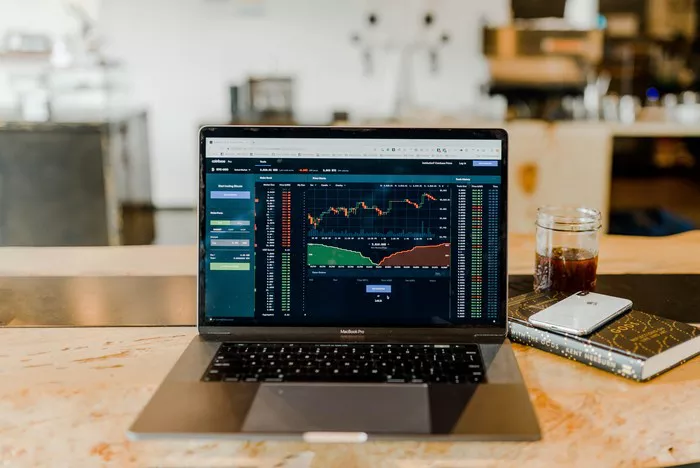Futures trading offers the potential for substantial profits, but it comes with inherent risks. Understanding how much you can lose when trading futures is crucial for any participant in these dynamic markets.
Understanding Futures Trading
Futures trading involves buying or selling contracts that obligate the trader to either purchase or sell an asset at a predetermined price on a specified future date. The assets traded can include commodities, currencies, indices, and more. The appeal of futures trading lies in the ability to profit from both rising and falling markets, providing diverse opportunities for investors and speculators alike.
Leverage and Magnified Returns
One of the distinguishing features of futures trading is the use of leverage. Leverage allows traders to control a more substantial position with a smaller amount of capital. While this magnifies potential returns, it also amplifies the risks. The use of leverage makes futures trading a double-edged sword, where gains and losses are proportionately heightened.
Calculating Potential Losses
The potential losses in futures trading are determined by the size of the position, the price movement of the underlying asset, and the leverage employed. Traders can use the concept of “tick size” to gauge the value of a price move in the futures market. Each tick represents a specific price movement, and the financial impact on the trader depends on the number of ticks the market moves against their position.
Risk-Reward Ratio
Traders often assess potential losses in relation to potential gains through the risk-reward ratio. This ratio compares the expected profit to the potential loss on a trade. A favorable risk-reward ratio indicates that potential profits outweigh potential losses, providing a framework for traders to make informed decisions. Establishing and adhering to a risk-reward ratio is a fundamental aspect of risk management in futures trading.
Margin Requirements and Initial Investment
Futures trading involves the use of margin, which is a fraction of the total contract value that traders must deposit to open a position. While margin allows traders to control larger positions, it also exposes them to higher potential losses. The initial investment, represented by the margin, determines the extent of a trader’s exposure to market movements.
Market Volatility
The futures market is inherently volatile, and price fluctuations can occur rapidly. Higher volatility increases the potential for both significant gains and losses. Traders must be aware that unexpected market events, economic reports, or geopolitical developments can trigger substantial price movements, impacting the value of their positions.
Stop-Loss Orders
To mitigate potential losses, traders often utilize stop-loss orders. A stop-loss order automatically sells a position if the market reaches a predetermined price level, limiting the extent of potential losses. While stop-loss orders are an essential risk management tool, they do not guarantee protection during extreme market conditions, such as gaps or slippage.
Diversification as a Risk Management Strategy
Diversification is a key risk management strategy that involves spreading investments across different assets or markets. By diversifying their portfolios, futures traders can reduce the impact of a poor-performing asset on their overall capital. This strategy aims to minimize potential losses by avoiding over-reliance on a single position or market.
Educational Resources and Continuous Learning
Education is a powerful tool for risk management in futures trading. Traders should equip themselves with a solid understanding of market mechanics, technical analysis, and fundamental factors that influence asset prices. Continuous learning helps traders make informed decisions, identify potential risks, and adapt to changing market conditions.
Market Conditions and Economic Indicators
Awareness of prevailing market conditions and economic indicators is paramount for futures traders. Economic reports, interest rate decisions, and geopolitical events can significantly impact market dynamics. Traders who stay informed about these factors are better positioned to anticipate potential market movements and adjust their strategies accordingly.
Psychological Factors and Emotional Discipline
Psychological factors and emotional discipline play a crucial role in managing potential losses in futures trading. Fear and greed can lead to impulsive decisions, such as abandoning a well-thought-out strategy during periods of market turbulence. Traders must cultivate emotional discipline to stick to their trading plans and risk management strategies.
Simulated Trading and Paper Trading
For novice traders, simulated or paper trading provides a risk-free environment to practice strategies and test their risk management skills. Simulated trading allows traders to experience market conditions without risking real capital. It is a valuable tool for honing skills, gaining confidence, and refining risk management techniques before engaging in live futures trading.
Conclusion
While the potential for profit in futures trading is enticing, understanding and managing potential losses is paramount for long-term success. Traders must be cognizant of leverage, margin requirements, market volatility, and the importance of risk-reward ratios. Implementing risk management strategies, such as stop-loss orders and diversification, helps mitigate potential losses. Continuous education, awareness of market conditions, and emotional discipline contribute to a comprehensive approach to risk management in futures trading. Ultimately, a well-informed and disciplined trader is better equipped to navigate the challenges and opportunities presented by the dynamic world of futures trading.


